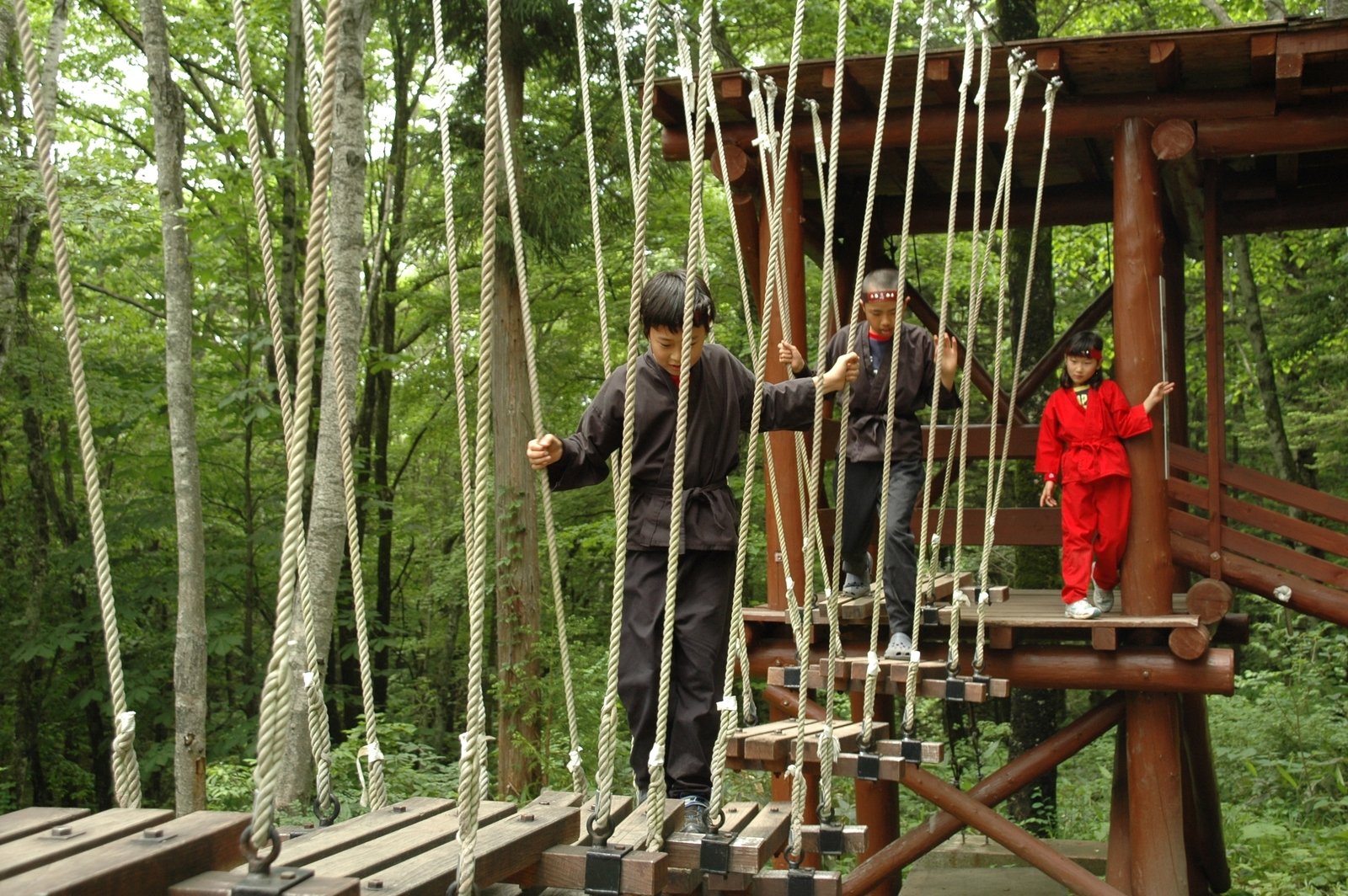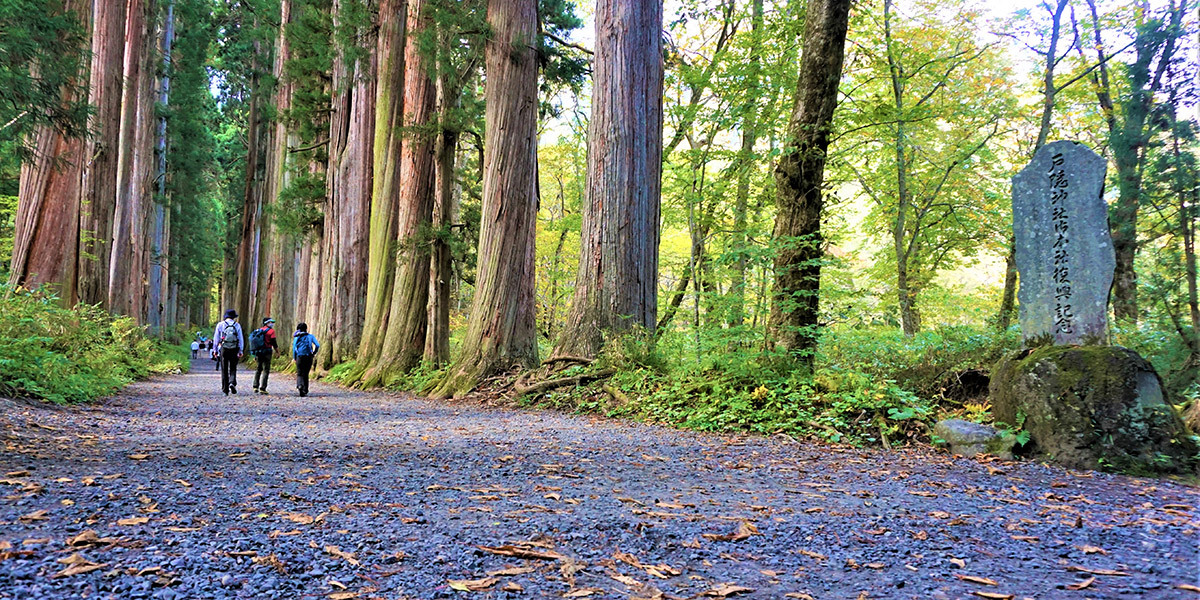A Tour of Togakushi's Mountain Ascetic and Ninja History
Hidden among Togakushi's venerable shrines and towering cedar trees is a long history of spiritual practice and covert operations.
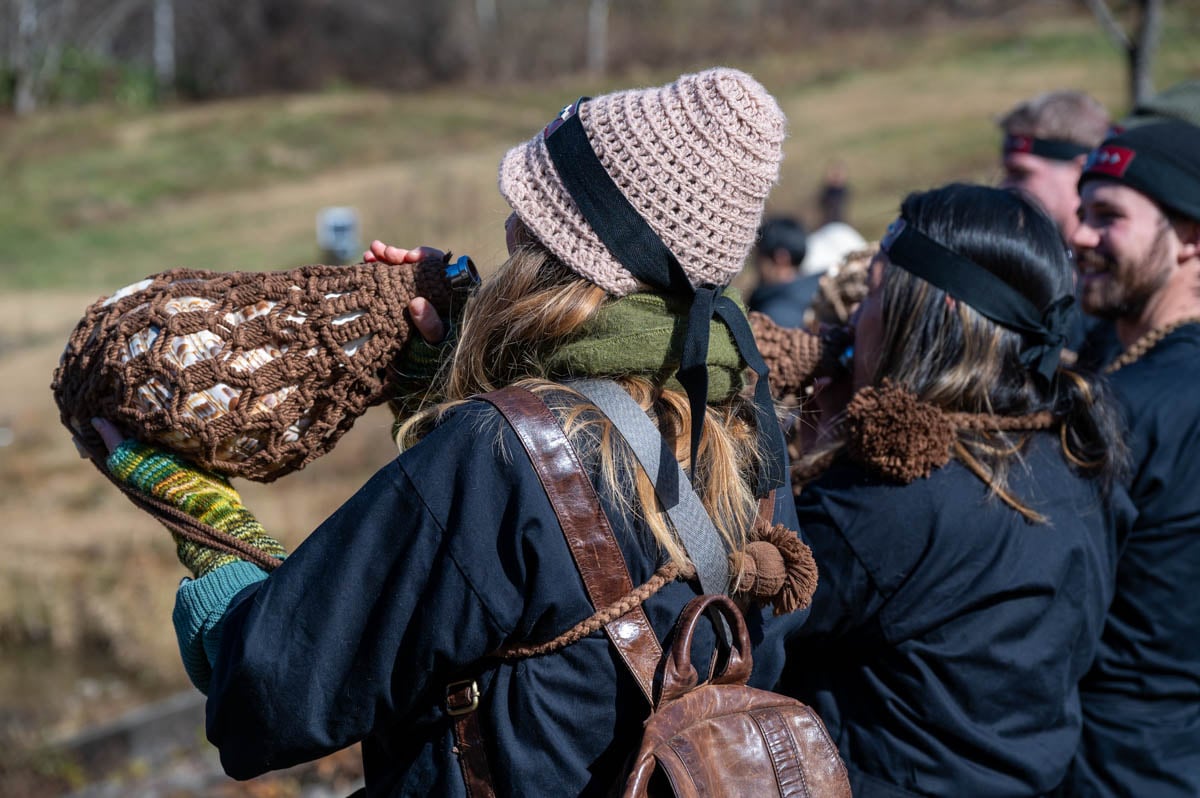
Beyond Togakushi’s towering cedar trees and tranquil ponds is a long and storied history. For over one thousand years, Togakushi has been a haunt of mountain ascetics seeking enlightenment in its forest and atop its precipitous peaks. At the same time, it is the home of the Togakure-ryu ninja, covert operatives who committed espionage and sabotage in the name of competing Daimyo lords.
On a tour of Togakushi’s history and culture, you can learn more about the mountain ascetic practices and the ninja that have inhabited and still inhabit the region to this day.
Currently, winter tours are being offered for the 2023-2024 winter season (see details below), but in this article, we share our experience on a monitor tour testing a future green season option.
A Tour of Togakushi's Mountain Ascetic and Ninja History
Join a Practicing Mountain Ascetic and Ninja for a Tour around Togakushi
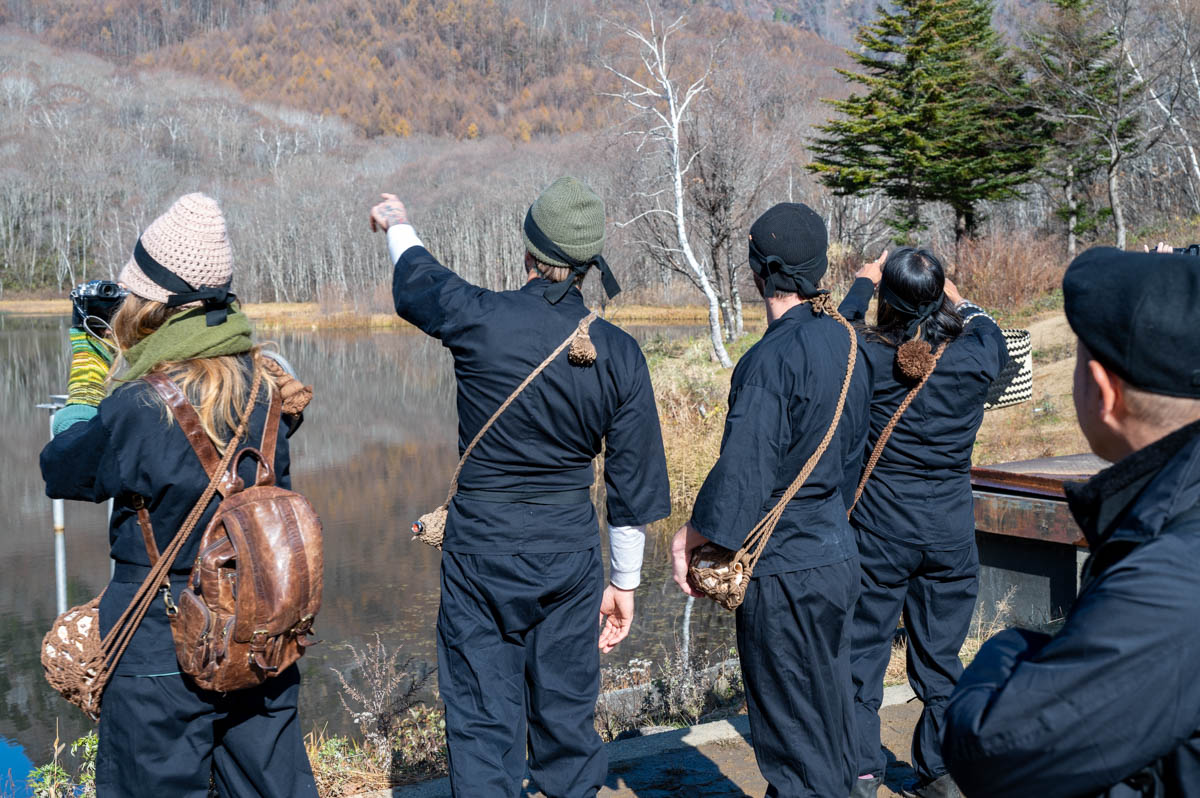
We met at Kagami Pond, a small body of water at the base of Mt. Togakushi. The sky was clear and the winds were calm. The mountain and the surrounding natural scenery reflected beautifully in the water’s surface.
There we met our guides for the day. Tyler-san, longtime Nagano resident and manager of Kamesei Ryokan in Togura Kamiyama Onsen; Okabe-san, a Togakushi-based outdoor guide; Yamaguchi-san, a soba-making expert and actual ninja; and Miyashita-san, a practicing mountain ascetic. Each brought a different area of expertise to the table.
To start our journey, we first changed into clothes more befitting of a ninja: traditional peasant garb dyed in black. Such clothing was both easy to move in and readily available back in the day—although the dyes used then may have been more subtle.
Our plan was to venture further towards Mt. Togakushi to visit one of the shrines at its base. But first, we had to announce our visit with a blow of the conch shell. We were each given our own conch shell to carry during our trek. Miyashita-san showed us how to hold it and how to properly blow into the shell to create a strong sustained note. It was hard at first, but before long, we had six conch shells blaring in unison to greet Mt. Togakushi.
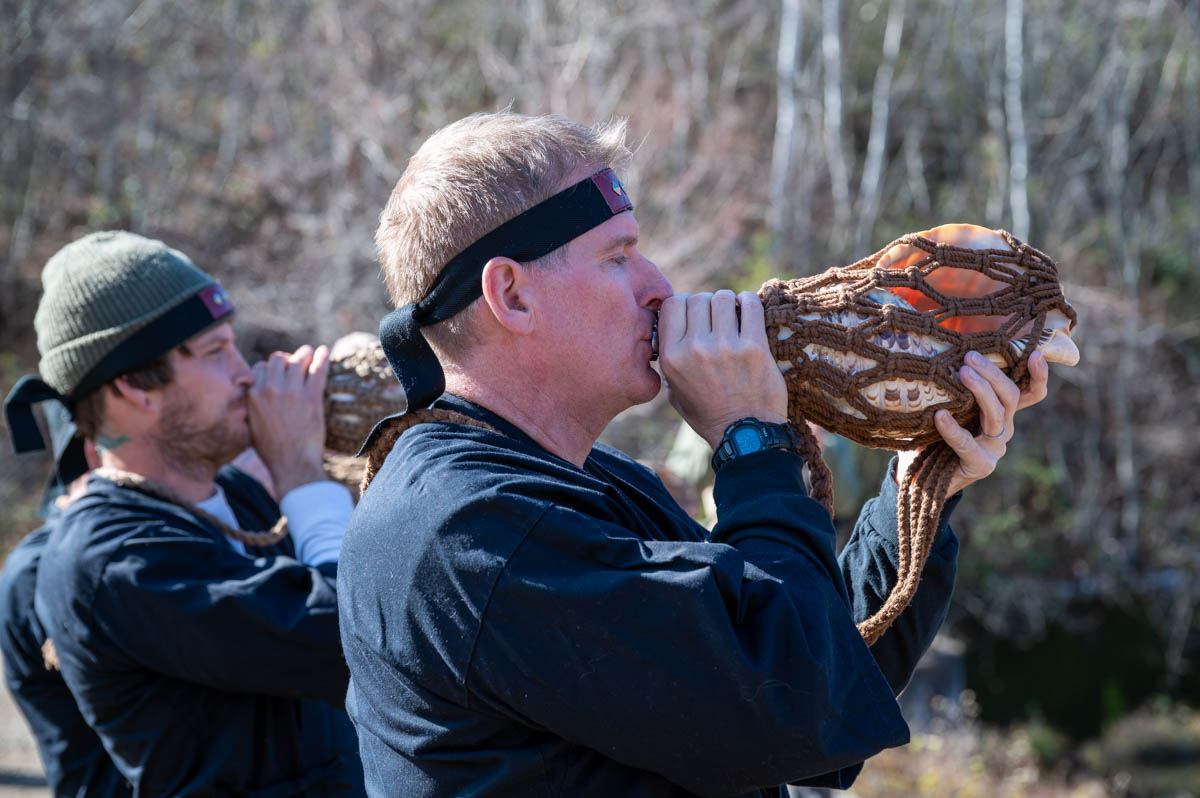
As we walked along the forest trail towards the mountain, Miyashita-san told us that blowing the conch shell not only announced our presence (a great way to scare off bears), it also reverberated in the rocks, the trees and our own bodies. It helped connect us with nature.
We continued our conch shell blowing practice throughout the walk. This alone was plenty of training for me, as repeatedly blowing into the conch shell took most of the air out of my lungs. Miyashita-san said that our breath was the most precious thing that we could offer the mountain.
Participating in a Mountain Ascetic Prayer Session
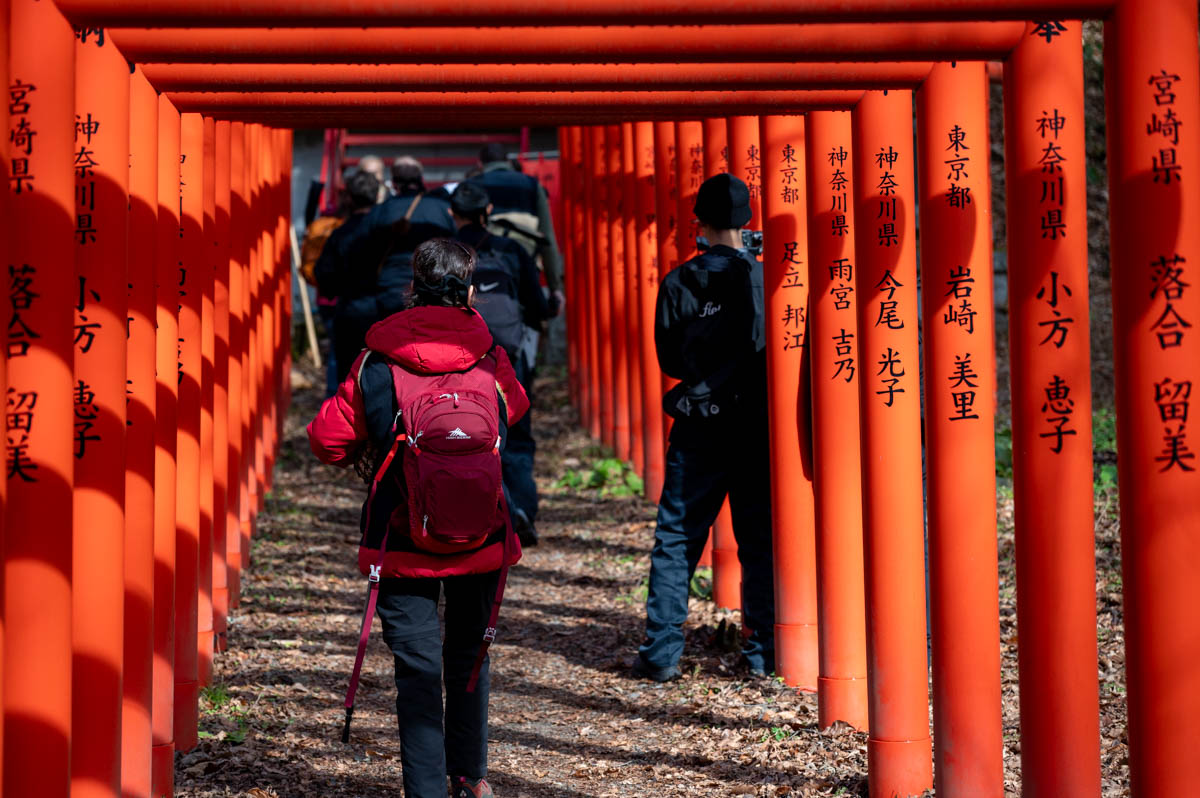
Tenmei Inari Shrine stood out among the surrounding greenery with its line of vermilion torii gates. The path seems to continue straight through the gates and take a sharp 90-degree right turn as it heads towards the Togakushi Okusha Shrine.
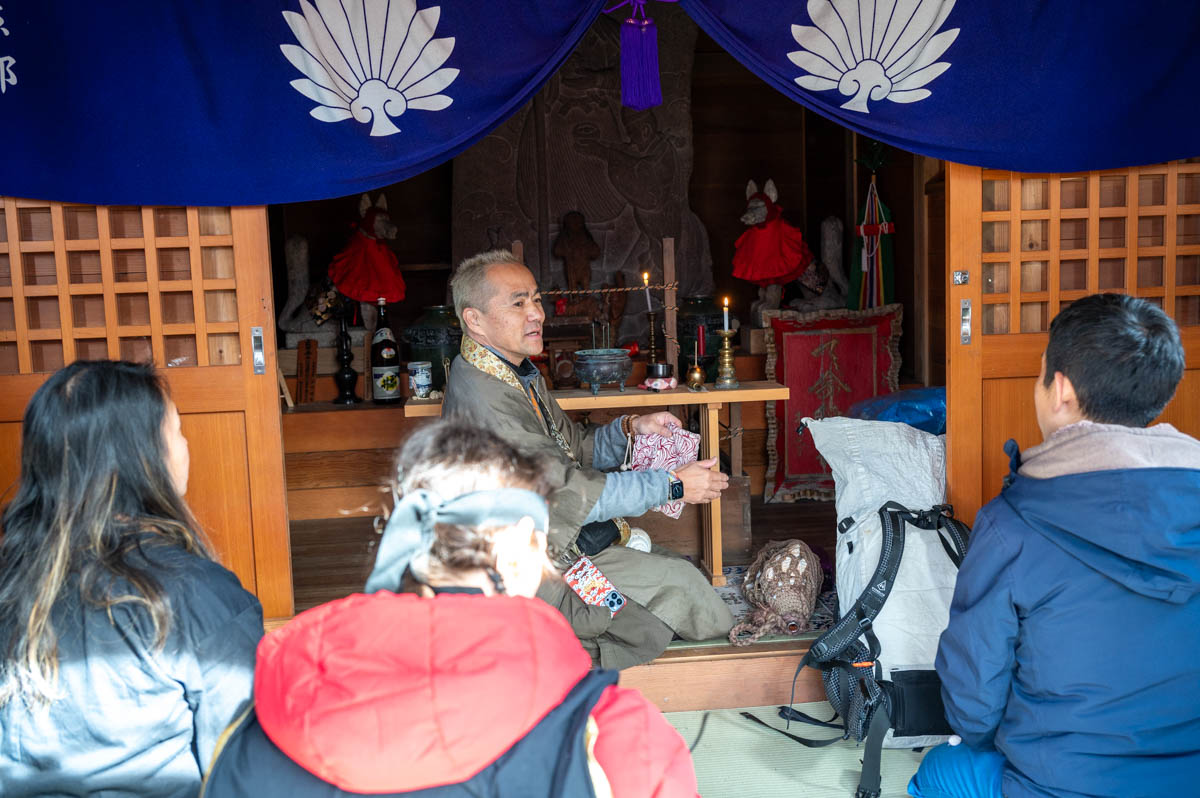
We stopped here for a special prayer session. Miyashita-san opened the doors to the small shrine hall and arranged himself in front of the altar, lighting candles and readying the tools he would need for a ritual. We all gathered around him and followed his instructions. In unison, we blew the conch shells three times to alert the shrine’s deity to our presence. Then, we listened carefully to Miyashita-san’s reciting of Shinto scripture. His lyrical chanting was accented by the occasional ringing of a small golden bell. The ritual ended with another three blows of the conch shell.
After we finished praying at the shrine, we headed back to Kagami Pond and on to our next destination: lunch at Yamaguchiya, one of the area’s soba restaurants.
Enjoying Togakushi Soba at Yamaguchiya
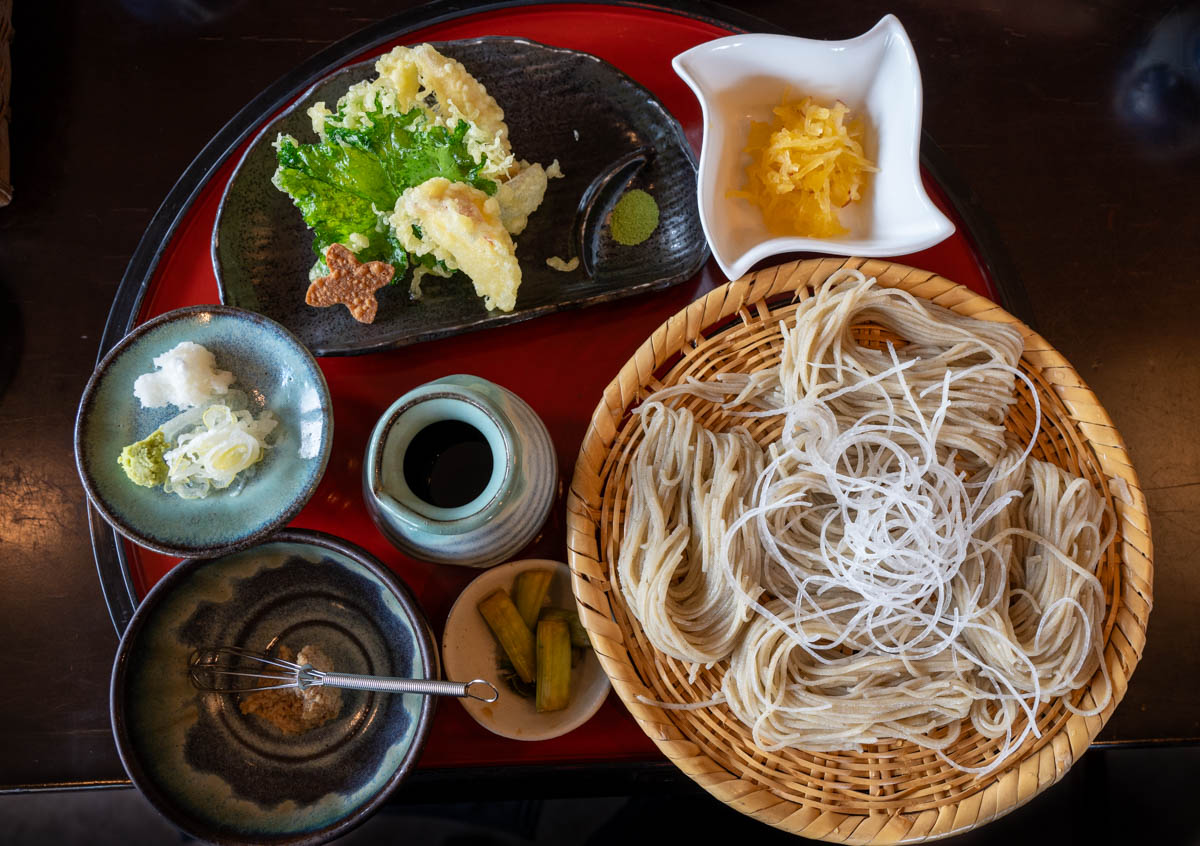
Soba is a specialty of the Togakushi area, as buckwheat was one of the few crops that could be grown in its harsh climate. Mountain ascetics would bring soba flour with them as rations during the training. Eventually, noodles made from soba flour were served to visitors to the shrines of Togakushi. Now, people travel here from around Japan just to taste them.
Yamaguchi-san is the former owner of Yamaguchiya (the restaurant is now run by his son). It sits in the hamlet below the Togakushi Chusha Shrine. In addition to their delicious soba noodles, they also offer a ninja-inspired set lunch, which includes a walnut-based dipping sauce, vegetable tempura and pickles.
The nutty aroma of buckwheat wafted from the plate of soba noodles, served in Togakushi’s botchi-mori style. And of course, the flavor was befitting one of Japan’s Three Great Soba Noodles.
Experiencing Togakushi’s Ninja History
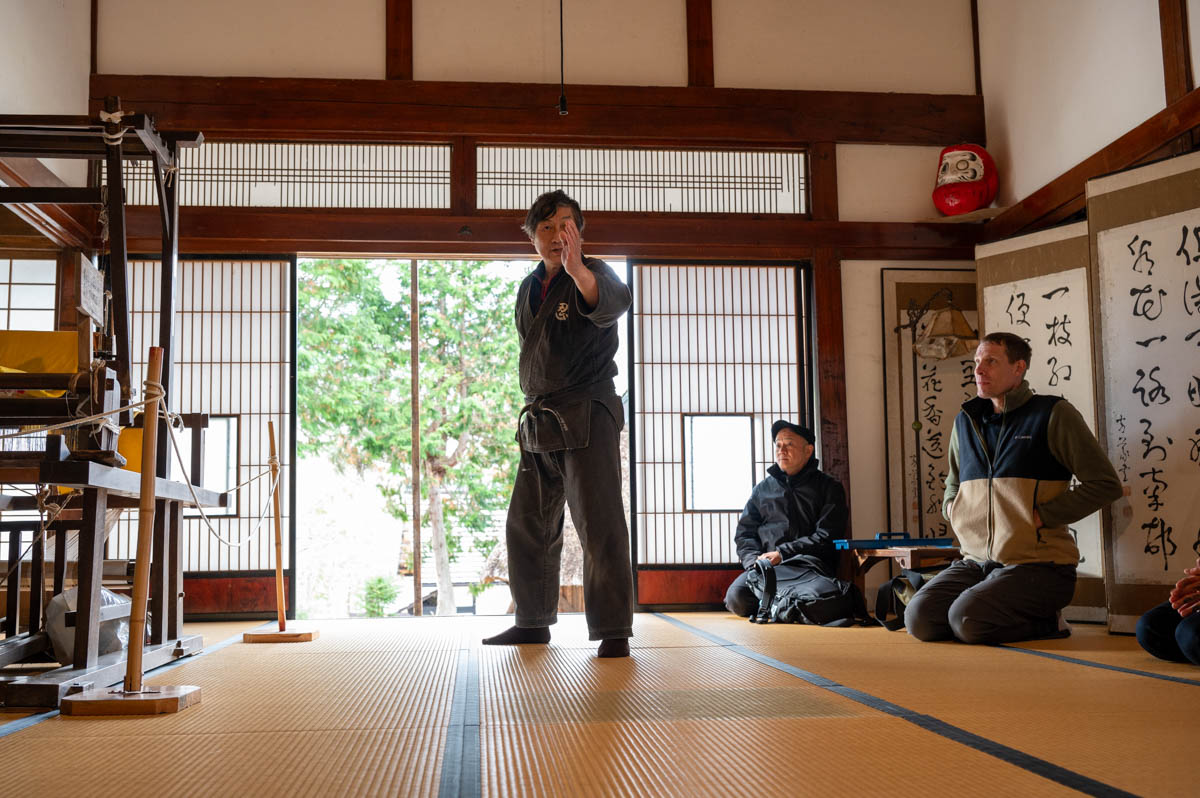
Togakushi was a prime location for covert operatives. It wasn’t a desirable place to live due to the difficult climate—rice didn’t grow well here and it was very cold during winter. Those who did venture through Togakushi were mainly mountain ascetics, mostly unattached to worldly affairs. Nagano was also a hot spot for battle during this time, with the battles of Kawanakajima between Uesugi Kenshin and Takeda Shingen taking place between 1553 to 1564, meaning that there was plenty of demand for espionage.
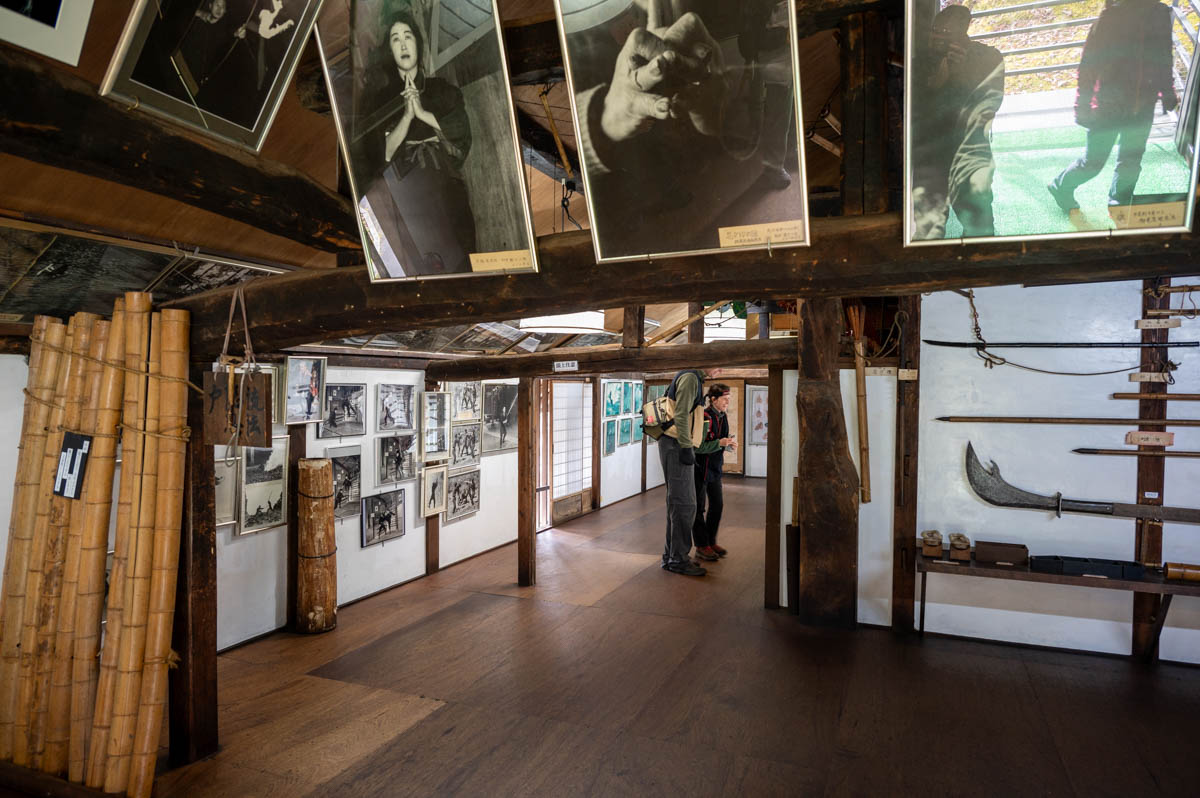
We learned about the history of the ninja in Togakushi and more at the Togakushi Ninja Museum. Sitting across from the Togakushi Okusha Shrine entrance, it exhibits a variety of tools that speak to the ingenuity of the ninja that lived here: a mix of farming implements modified into deadly weapons as well as swords and dart guns hidden in common everyday items.
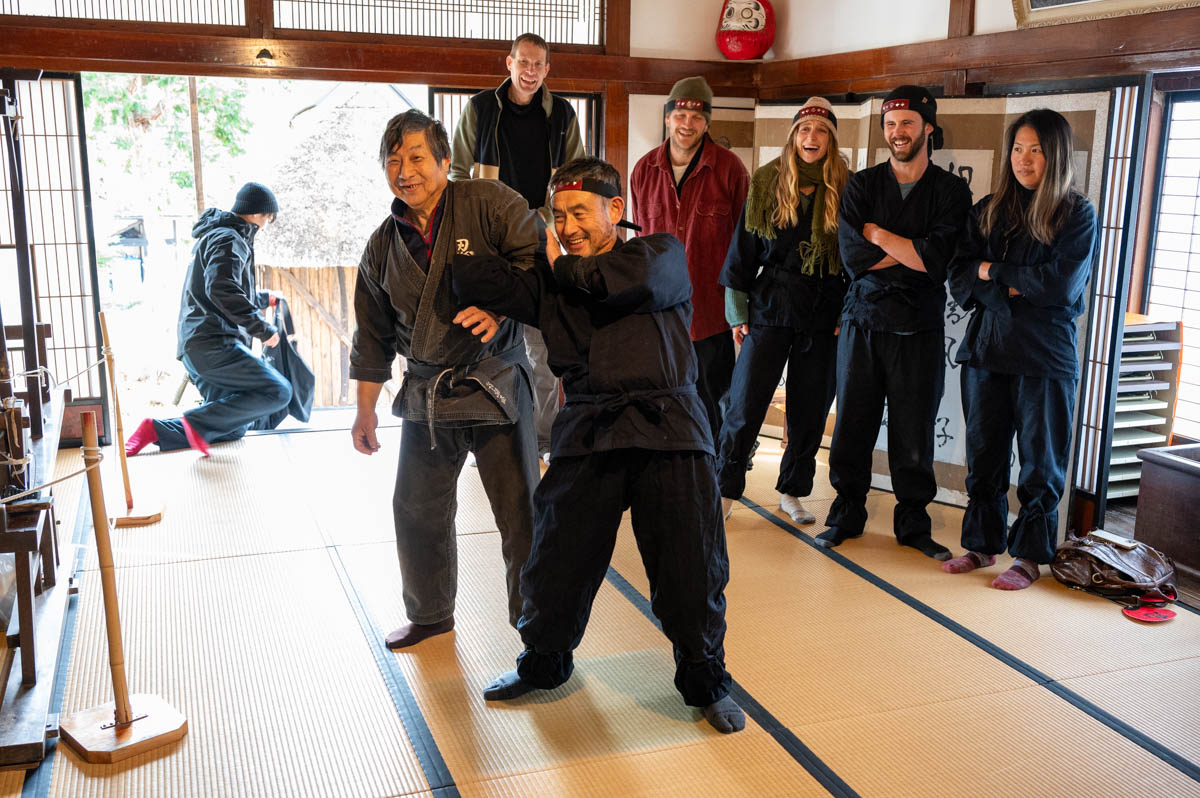
On the first floor of the museum, Yamaguchi-san and Matsuhashi-san introduce us to some basic techniques that ninja used to neutralize their opponents. In our hands-on lesson, we took turns squeezing pressure points of the hand and contorting arms into uncomfortable positions. It was just as important to learn how to execute the move as it was to learn how it felt on the receiving end—not great, that’s for sure. They also showed us a few more advanced moves that we couldn’t learn to replicate in just one afternoon.
Taiko Drumming and Horagai Ensemble
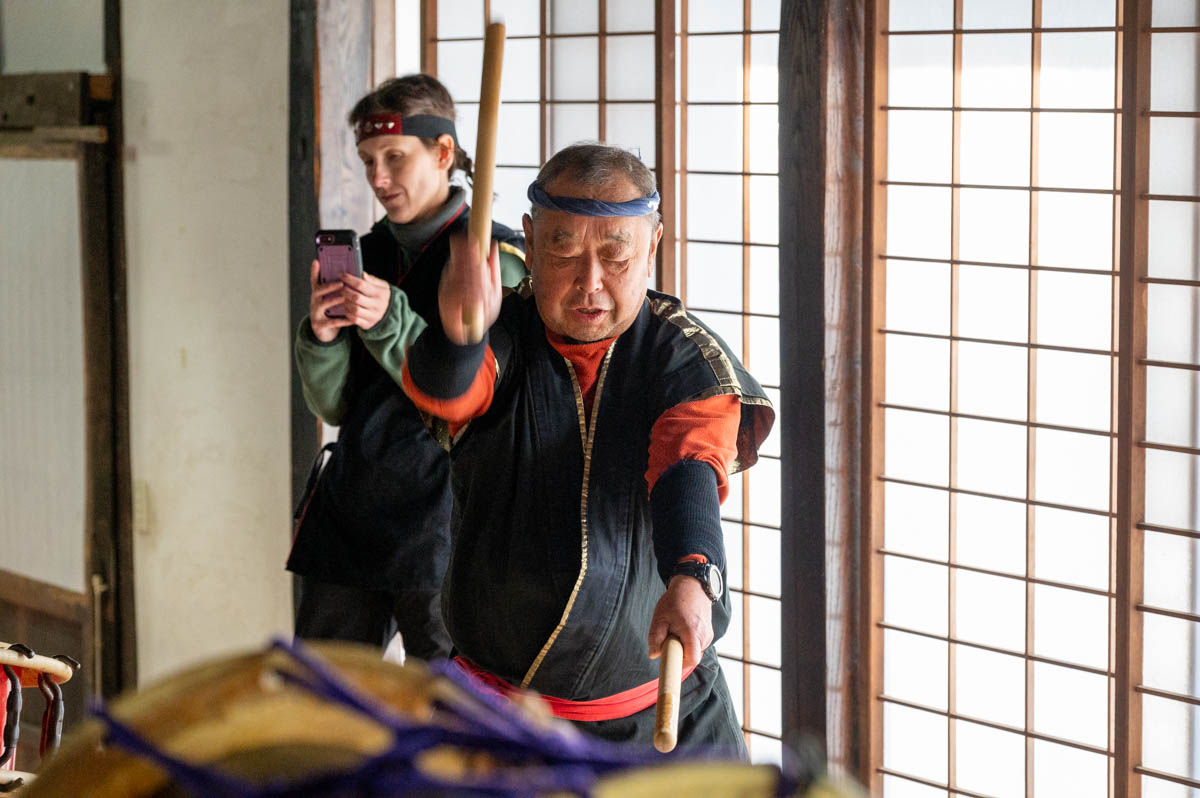
Finally, we enjoyed a short lesson in taiko drumming from a taiko master who plays the drums for ceremonies at Togakushi Shrine. He taught us the taiko drumming posture and showed us several simple rhythms, which we practiced together. After we had a handle on them all, we added in a few horagai players for a short ensemble. We played for about ten minutes while Yamaguchi-san and Matsuhashi-san performed some ninja acrobatics.
Combining the Horagai playing of the mountain ascetics with the taiko drumming of Togakushi Shrine and the ninja performance summed up our day nicely. It was a display of Togakushi’s culture and history: a haunt of mountain ascetics seeking enlightenment and ninja working for rival Daimyo during Japan’s period of civil war. Even today, a spiritual and mysterious air hangs around Togakushi, a place that sits between legend and reality.

